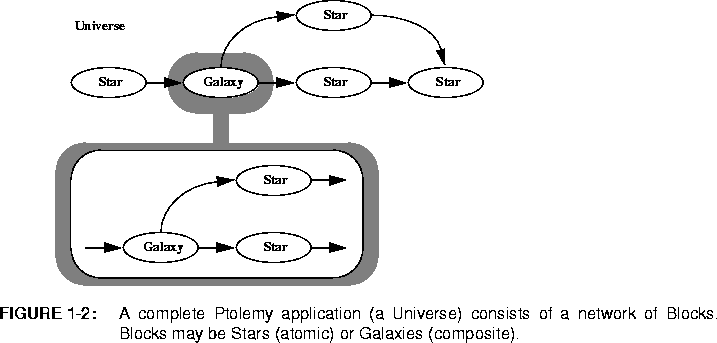









pigi (Ptolemy interactive graphical interface). The first process contains the vem user interface and the oct design database [Har86], and the other process contains the Ptolemy kernel.
The
pigi program, which is aptly named, contains all Ptolemy domains. As such, it is a rather large program that requires a good bit of memory. For the DSP classes, a much smaller version, called ptiny, is sufficient. This is the version you should use.

Star. A hierarchical block that consists of multiple stars is a Galaxy, and a top-level system representation is a Universe. Unlike physical galaxies, Ptolemy galaxies can also contain other galaxies.
The domain used in our DSP classes, the synchronous dataflow (SDF) domain [Lee87a,b], is one of the most mature in Ptolemy. It is used for signal processing and communications algorithm development, and has particularly good support for multirate algorithms [Buc91]. A dynamic dataflow (DDF) domain, which is not used in our DSP classes, extends SDF by allowing data-dependent flow of control. Many other Ptolemy domains provide alternative modeling and implementation techniques.







